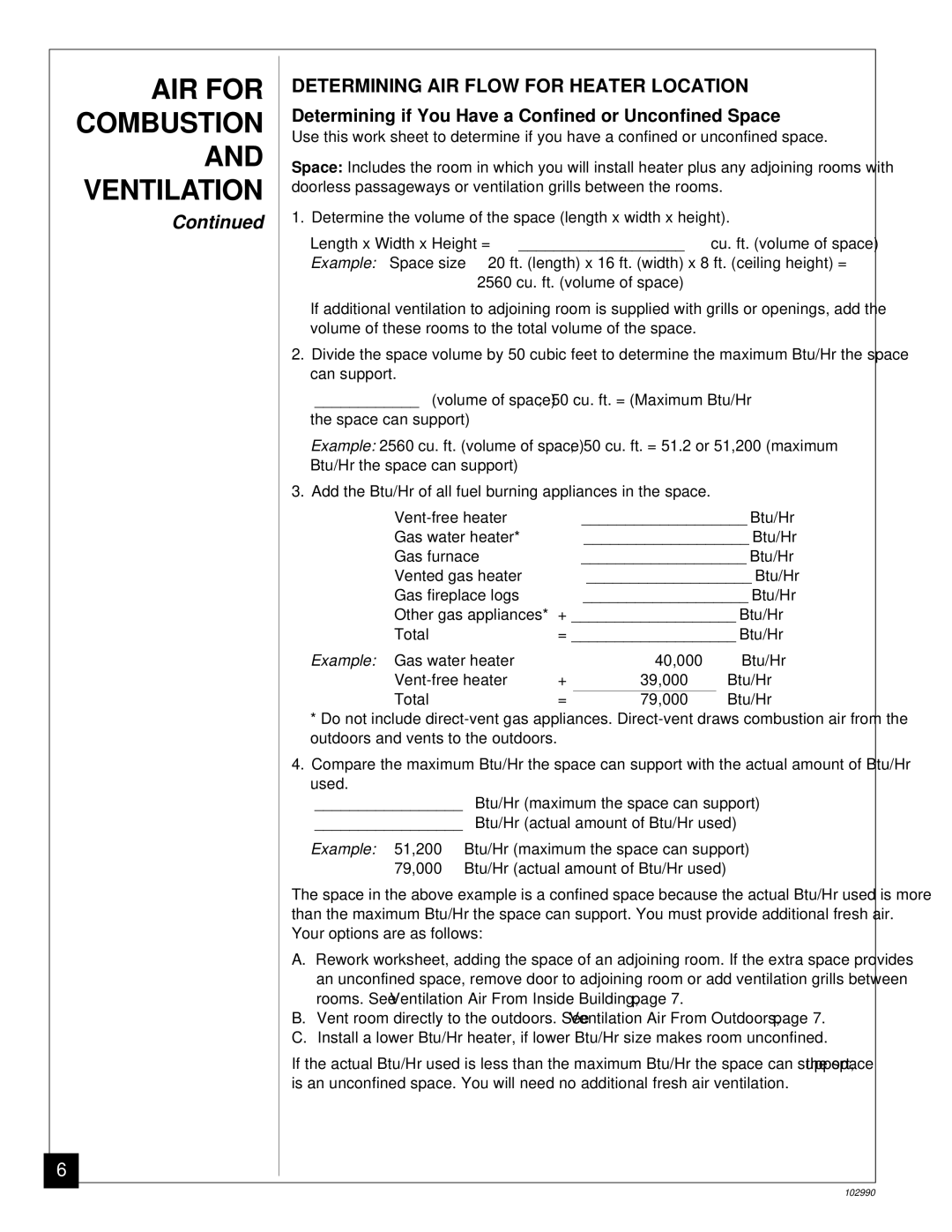CGD3018N, CGD3930N specifications
The Desa CGD3930N and CGD3018N are innovative gas heaters that exemplify cutting-edge technology and design in the heating industry. Both models are designed to provide efficient heating solutions for residential spaces, ensuring comfort during colder months while being environmentally conscious.The CGD3930N is a powerful unit featuring a heating capacity of up to 30,000 BTUs, making it suitable for larger areas. It combines radiant and convection heating methods to ensure even heat distribution throughout the space. This model is equipped with a thermostat for precise temperature control, allowing users to set their desired comfort level easily. One of its standout features is the built-in oxygen depletion sensor, which enhances safety by monitoring the air quality to prevent hazardous conditions.
On the other hand, the CGD3018N, with a heating capacity of 18,000 BTUs, is perfect for smaller rooms or spaces that require consistent heating without excessive energy consumption. Its compact design makes it adaptable for various room layouts. Like the CGD3930N, it also features an adjustable thermostat, ensuring users can maintain the preferred level of warmth. The heater's flameless design provides a safe alternative to traditional heating methods, reducing the risk of accidents.
Both models utilize advanced ceramic burner technology, which enhances combustion efficiency and reduces emissions. This is particularly important as households increasingly seek to minimize their environmental footprint. This technology also ensures that both heaters operate quietly, providing warmth without the disruption of noisy mechanisms.
A significant aspect of the Desa CGD3930N and CGD3018N is their versatility. They can be installed as wall-mounted units or freestanding options, giving homeowners the flexibility to choose the best configuration for their space. The modern aesthetic of both models complements a wide range of interior designs, making them not only functional but stylish additions to any home.
In conclusion, the Desa CGD3930N and CGD3018N are excellent choices for those seeking reliable and efficient heating solutions. With their advanced features, safety measures, and stylish designs, these gas heaters provide warmth and comfort in any residential environment while promoting energy efficiency.

